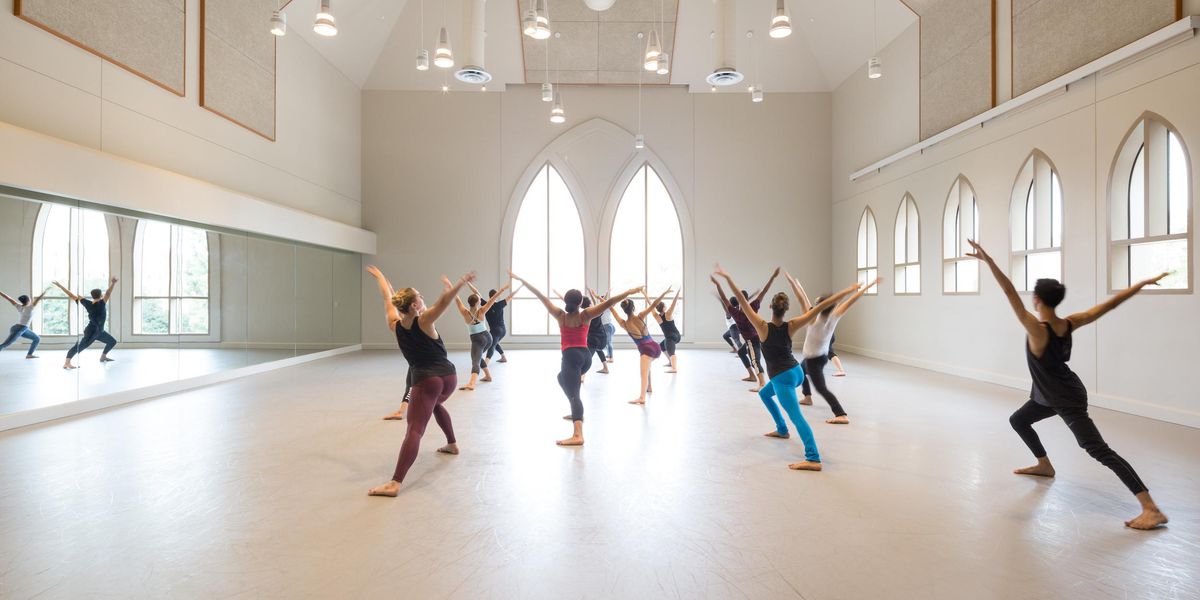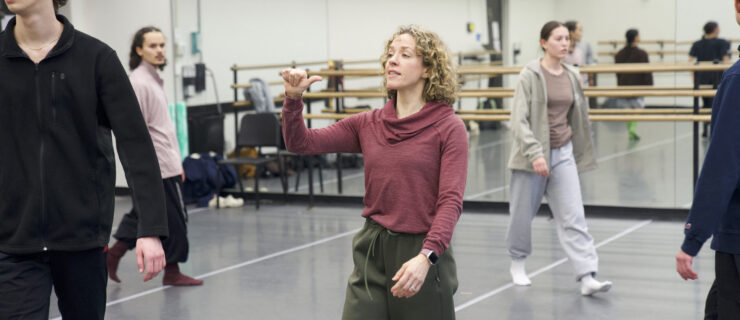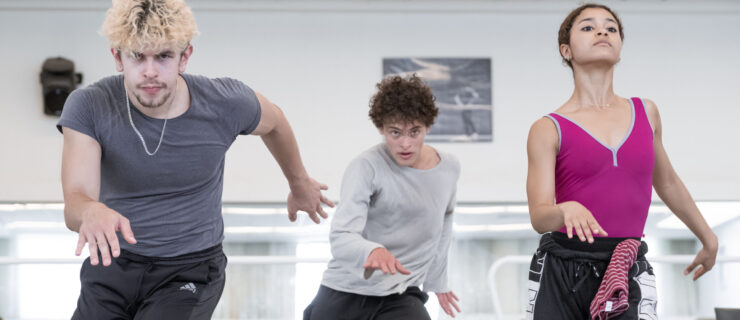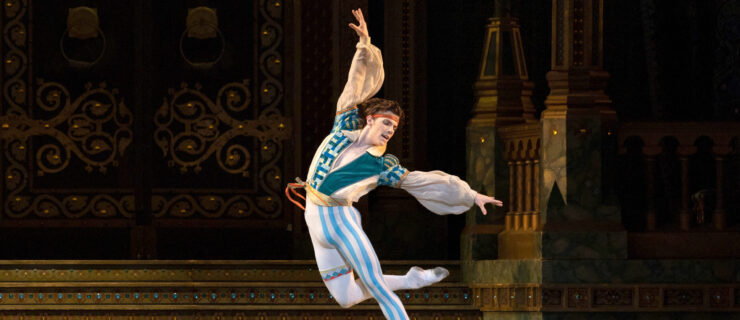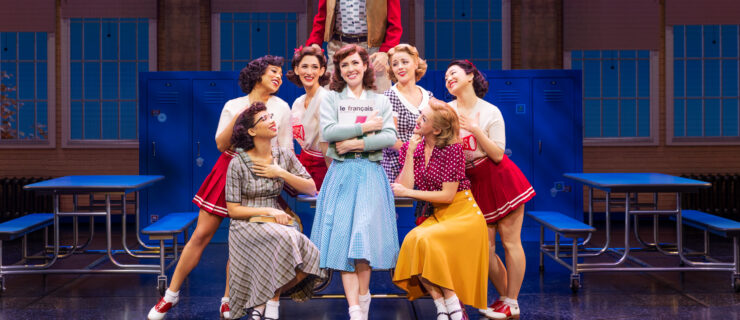Bolshoi Babylon
A new documentary airing on HBO this month offers rare insight into the iconic Russian company‘s complicated politics.
Filin just after the attack. All photos courtesy HBO Documentaries.
A principal dancer works her way back from a ruptured Achilles tendon, taking corrections from a demanding coach. A soloist complains that she’s not getting the roles she craves. Dancers in the wings giggle and gossip while watching a performance. Their new boss grumbles about his job and says that his wife cried when he told her he’d gotten it.
These behind-the-scenes glimpses of ballet life imply an easy intimacy with the subject. But the filmmakers who captured them, Nick Read and Mark Franchetti, are in fact complete newcomers to ballet.
First soloist Anastasia Meskova.
More remarkable still, the ballet company being so closely examined is that of the storied Bolshoi Theatre—huge, hermetic and the apogee of the performing arts in Russia. Read and Franchetti were given the run of the theater for all of the 2013–14 season, and they took full advantage. They filmed performances, rehearsals and overwrought staff meetings; they collected archival footage of legends like Maya Plisetskaya onstage and notables like Fidel Castro and Queen Elizabeth in the audience; they interviewed dancers, managers, teachers, ushers, patrons and even Dmitry Medvedev, the Russian prime minister. The resulting documentary,
Bolshoi Babylon, airing on HBO December 21, will surprise longtime Bolshoi admirers as well as neophytes.
What drew the filmmakers to the Bolshoi was not music or dance but drama—real-life drama, beginning on the night of January 17, 2013, when a masked assailant threw acid at ballet director Sergei Filin, burning and nearly blinding him. During the fallout, Franchetti, the Moscow correspondent for the
Sunday Times of London, and Read, a London-based documentarian, were in Russia with a film crew, wrapping up The Condemned, their documentary about a Russian prison. They understood immediately that the sulfuric acid that disfigured Filin had also shattered the pristine image of the Bolshoi, which Franchetti calls the country’s “single most important cultural institution.” They smelled a good story.
The Bolshoi corps.
Having lived in Moscow for 18 years, Franchetti has sources and contacts, and that’s what it takes to maneuver in Russia, he says. With the right people vouching for him, he got the Bolshoi to allow him
and Read to film. Their approach was classic: “This terrible thing has happened,” Franchetti says he told management, “and it’s really a low point in the reputation of a great theater. We have to tell that story. But we’re also really interested in what life backstage is like. We’d like to tell some of the stories of the extraordinary people who work inside this building. And we’d like to explain why it has such an extraordinary place in the Russian psyche, why everyone in Russia feels they somehow own a small part of the Bolshoi.” Could anyone turn down such a pitch? The Bolshoi didn’t, and Read, as director, and Franchetti, as producer and co-director, began work.
But everything changed when one of the Bolshoi’s own stars, Pavel Dmitrichenko, was arrested, accused of having engineered the attack. The tensions at the institution boiled over into chaos, Franchetti recounts, and the general director of the Bolshoi Theatre, Anatoly Iksanov, “got cold feet” and threw them out. They decided to let some time pass, and soon enough it was Iksanov who was gone, replaced in July of 2013 by Vladimir Urin. The new director agreed to let them film whatever they wanted (in the process, divulging his wife’s tearful reaction to his new job).
Filin at a press conference.
The Bolshoi employs some 3,000 people, but fewer than 300 work for the ballet company. Read and Franchetti spent weeks digging for the most compelling characters—those, Franchetti says, “with the most interesting stories to tell, and, most importantly, the ones that are best at telling them.” Making the cut were principal
dancers Maria Alexandrova and Maria Allash; first soloist Anastasia Meskova; former dancer and outspoken Bolshoi gadfly Nikolai Tsiskaridze; and veteran ballet master Boris Akimov. “We chose characters on the basis of how open and honest they are talking about the institution, the problems of the institution, and about their lives,” says Read. Urin, Filin and other managers also got their say. Dmitrichenko, who never consented to be interviewed, is seen only in news footage.
The filmmakers insinuated themselves into the dancers’ lives using
the techniques of “observational” cinema: “You establish a presence,” Read says, “and you sustain it. For every moment that makes it to the screen, there
are hundreds when you are just there, and they’re getting used to you.”
Their method certainly succeeded in the case of Meskova, who makes no effort to disguise her unhappiness when she learns, at the beginning of the film, that she won’t be touring with the company to Singapore. Nor does she attempt to minimize the personal cost of her career, celebrating her young son’s birthday backstage in her dressing room and openly wondering, “Why the hell do I try so hard?”
Pavel Dmitrichenko
In a phone interview this fall from Moscow, with Franchetti
interpreting, it’s clear that Meskova’s unhappiness has since subsided. “Maybe it’s because I’m older and more mature,” she suggests. She’s also now dancing Myrtha in Giselle, a role she’s long coveted. And, she says, “the atmosphere has now improved. Things have calmed down.” She says she tried not to take sides when the company split into pro-Filin and pro-Dmitrichenko camps. “All the people involved in this tragedy are people who are very close to me,” she says, “and I found it very painful. Even when I watched the film, I found it painful to be reminded.”
Pain is part of every dancer’s life, but working at the Bolshoi is particularly harsh, Franchetti says. “It’s a bit of a cemetery of talent,” he notes. “You have top top top dancers who never make it out of the corps.” The opaque casting system, dominated by influential teachers who promote favorites to the management, creates much resentment among rival cliques. Some of that resentment exploded into the acid attack—the reported motive was that Dmitrichenko’s girlfriend was not getting the roles he felt she deserved. There were whispers that cash was being exchanged for stage time. The film reveals how much string-pulling goes on at the Kremlin, which founded the Bolshoi and still funds it. “Everyone thinks they know how to run the Bolshoi Theatre,” Urin says. “Absolutely everyone.” On this point, Urin and Filin, who don’t agree on much, concur. Filin describes the job of artistic director as “a minefield,” and viewers understand why when the film captures the mistrust and open hostility he faces from both the top and bottom at a company meeting. Urin’s lack of confidence in Filin is apparent, rooted in their rocky relationship at Moscow’s Stanislavsky Theatre, when Urin was general director and Filin the ballet director—the exact duplicate of their roles at the Bolshoi. No one present at that meeting could have been surprised when Urin failed to renew Filin’s Bolshoi contract this summer.
So the drama continues, but Read and Franchetti will let others follow it. They are now ballet fans, and, says Read, “I would like to go and enjoy it without a camera in my hand.”
Sylviane Gold is Dance Magazine’s On Broadway columnist.
